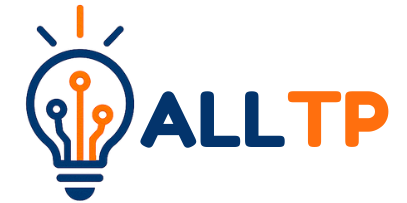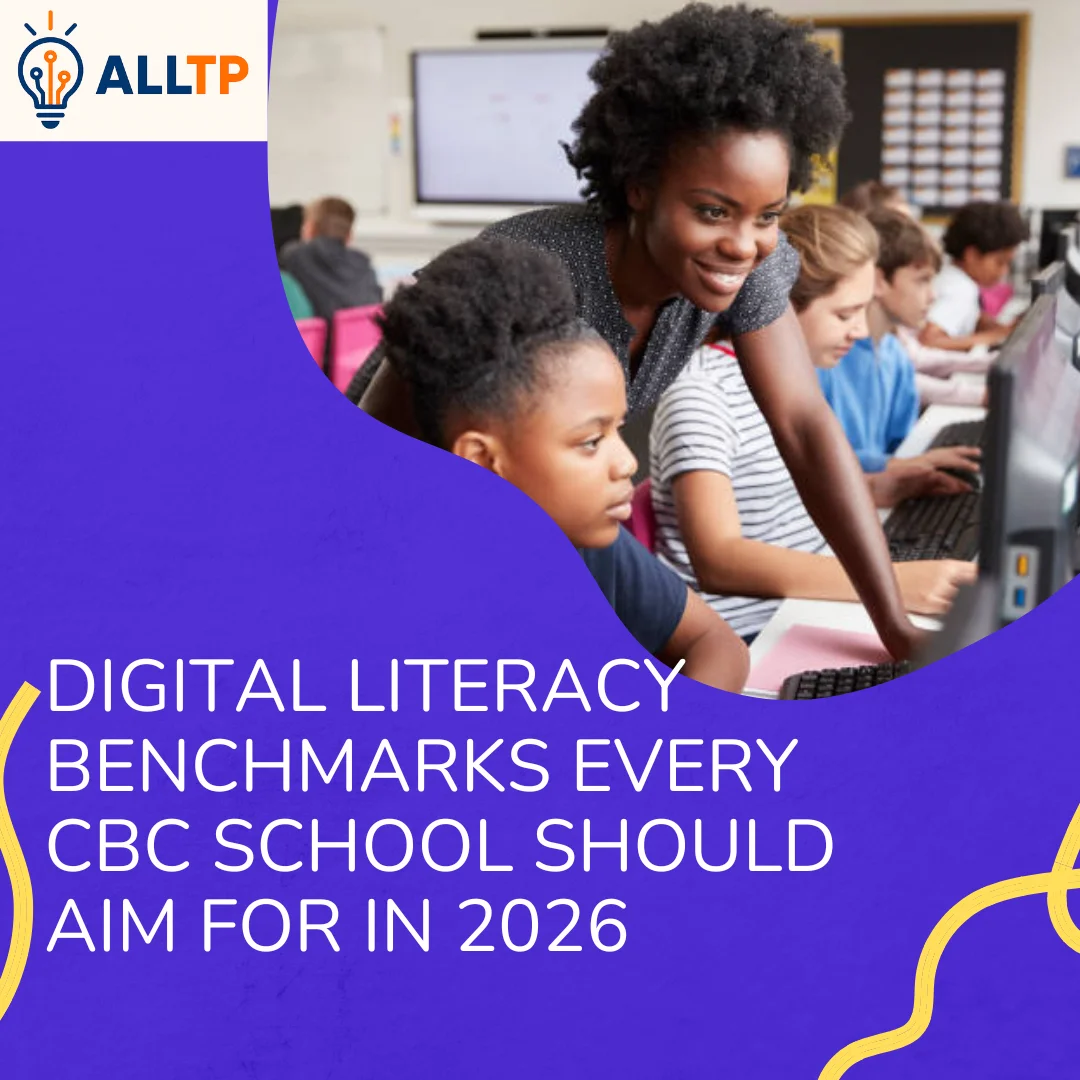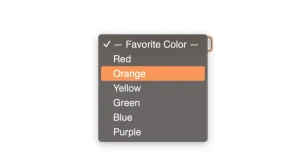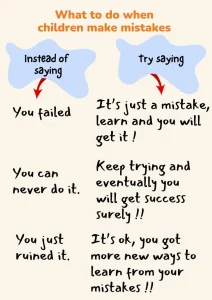Kenya’s Competency-Based Curriculum (CBC) was designed to equip learners with the knowledge, skills, and values necessary to thrive in the 21st century. Unlike traditional education models that emphasize rote learning, the CBC focuses on developing core competencies—communication, collaboration, critical thinking, and creativity —strengthened by digital literacy.
In today’s rapidly evolving world, digital literacy is no longer optional; it is the foundation for innovation, problem-solving, and employability. From research and communication to coding and online collaboration, students who master digital tools early are better prepared for the future of work and lifelong learning.
Kenya has made commendable progress in integrating Information and Communication Technology (ICT) into its education system. Initiatives such as the Digital Literacy Programme, increased access to online learning resources, and investments in ICT infrastructure have positioned schools to embrace the digital era.
However, as CBC rolls out across all education levels, there is a growing need to establish clear digital literacy benchmarks to ensure that all learners, regardless of location or background, receive equal digital opportunities.
By 2026, CBC schools should have reached key digital milestones that define readiness for a technology-driven society. Platforms like All Things Programming are already contributing to this vision by providing practical digital learning resources, coding programs, and teacher support to strengthen ICT integration in classrooms. Together, these efforts will ensure that every Kenyan learner is not just digitally aware but digitally empowered.
Understanding Digital Literacy in the CBC Context
Digital literacy goes beyond simply knowing how to use a computer or mobile device; it involves the ability to access, evaluate, create, and communicate information safely and effectively using digital tools.
According to Kenya’s Ministry of Education, digital literacy is one of the key competencies emphasized in the Competency-Based Curriculum (CBC), preparing learners to participate meaningfully in a knowledge-driven economy. Similarly, UNESCO defines digital literacy as “the ability to use ICT to find, evaluate, create, and communicate information, requiring both cognitive and technical skills.”
Within the CBC framework, digital literacy is not treated as a standalone subject but as a cross-cutting competency embedded across learning areas. This approach ensures that learners use technology to enhance their understanding of science, mathematics, language, and even creative arts. The goal is to make students not just consumers of digital content but also creators and innovators who can use technology to solve real-world problems.
How CBC Embeds Digital Skills Across Learning Areas
CBC promotes four key digital competencies that mirror the global 21st-century skill set:
- Communication: using digital platforms to express ideas clearly and collaborate with peers.
- Collaboration: working effectively with others through shared digital projects or online discussions.
- Creativity: leveraging technology to design, innovate, and present new ideas.
- Critical thinking: analyzing online information, making informed decisions, and solving problems using digital tools.
Technology also plays a vital role in making CBC’s learner-centered education possible. Digital tools enable personalized learning, interactive content, and instant feedback, empowering students to take ownership of their education. Teachers, on the other hand, shift from being mere instructors to facilitators of discovery, guiding learners to explore and apply digital skills in practical ways.
By aligning digital literacy with CBC’s core competencies, including self-efficacy, citizenship, and problem-solving, Kenya’s education system ensures that every learner gains the confidence and adaptability needed to thrive in a digital world.
For school leaders seeking to accelerate this transformation, see our related guide: Why School Directors Should Prioritize Digital Literacy Today.
The Need for Digital Literacy Benchmarks by 2026
As Kenya’s Competency-Based Curriculum continues to expand across all education levels, setting clear and measurable digital literacy benchmarks has become a national priority. Without defined standards, schools may progress unevenly, with some achieving advanced ICT integration while others lag due to limited resources or training. Benchmarks ensure consistency, accountability, and progress tracking, helping every CBC school move toward a shared vision of digital readiness.
Currently, there are still significant gaps in access, training, and implementation. Many rural schools face limited internet connectivity, unreliable power supply, and a shortage of digital devices. In contrast, urban institutions often benefit from better infrastructure and access to digital learning materials.
Teacher preparedness also varies widely; while some educators have embraced digital teaching methods, others still lack the technical confidence and training needed to integrate ICT into lessons effectively.
To bridge these gaps, the Kenyan government’s Digital Masterplan (2022–2032) outlines a clear roadmap for ICT integration in education. By 2026, the plan envisions that all schools should have basic digital infrastructure, teachers trained in ICT, and learners equipped with foundational digital skills. This aligns directly with the CBC’s goal of nurturing innovative, tech-savvy citizens who can compete globally.
However, achieving this vision requires deliberate action to ensure equity between rural and urban schools. Access to digital tools and internet connectivity must not be a privilege but a right for every Kenyan learner. Initiatives such as community ICT hubs, solar-powered classrooms, and affordable e-learning devices can help close this divide, allowing all learners, regardless of their background, to participate fully in the digital transformation of education.
Key Digital Literacy Benchmarks CBC Schools Should Target
To fully realize the vision of a digitally competent generation by 2026, every CBC school should commit to achieving a set of core digital literacy benchmarks. These targets provide a structured roadmap for educators, administrators, and policymakers to measure progress and ensure that all learners benefit equally from Kenya’s digital transformation.
1. Infrastructure and Access
A strong digital foundation begins with reliable infrastructure. Every school should have stable internet connectivity and sufficient digital devices, ideally, a ratio of one device for every three learners. Access to smart classrooms, interactive whiteboards, and locally relevant digital content will help bring lessons to life and foster interactive learning.
In remote or off-grid areas, solar-powered or alternative energy solutions can ensure continuous access to technology, bridging the digital divide between rural and urban schools. These investments form the backbone of Kenya’s Digital Masterplan goals and are essential for inclusive ICT integration.
2. Teacher Digital Competence
Teachers are at the heart of CBC implementation. Continuous ICT training and professional development will empower educators to integrate digital tools into lesson planning, assessment, and classroom management. Beyond technical skills, teachers should model safe, responsible, and ethical online behavior and guide learners in appropriate technology use.
When teachers are confident and digitally competent, they can transform learning experiences, making lessons more interactive, engaging, and relevant to modern life.
3. Student Digital Skills
By 2026, learners at every level should demonstrate progressive mastery of digital skills.
- By Grade 4: Students should be able to perform basic computer operations, including typing, saving files, and navigating educational software.
- Upper primary: Learners should acquire research and online collaboration skills, such as using the internet for information gathering and working on shared digital projects.
- Junior and senior secondary: Students should engage in coding, robotics, and problem-solving projects that foster creativity and innovation, preparing them for future STEM careers and entrepreneurial opportunities.
4. Curriculum and Learning Resources
The CBC emphasizes learning through experience and creativity. Schools should incorporate digital textbooks, simulations, and interactive e-learning materials across subjects to make learning more engaging.
Digital literacy topics such as coding, data literacy, and digital ethics should be seamlessly integrated into the curriculum. Collaboration with EdTech organizations like AllThingsProgramming can further enhance hands-on learning, giving learners real-world exposure to technology and programming.
5. Digital Safety and Citizenship
As learners spend more time online, schools must prioritize digital safety and citizenship education. Students should understand the dangers of cyberbullying, the importance of data privacy, and how to maintain a positive digital footprint.
Teachers and parents should guide learners in using social media responsibly, promoting ethical creativity and empathy in online spaces. Building strong digital citizenship early will create a generation that uses technology for good.
6. Assessment and Progress Tracking
Digital tools can greatly enhance how schools measure learning outcomes. The use of digital portfolios allows students to showcase projects and track their growth over time. Similarly, online formative and summative assessments provide instant feedback and make evaluation more dynamic.
At the school level, data analytics systems can help administrators monitor academic trends, identify learning gaps, and make informed decisions, all contributing to improved teaching and learning outcomes under the CBC framework.
These benchmarks, when achieved collectively, will ensure that CBC schools not only embrace technology but also use it to unlock the full potential of every learner, preparing them to thrive in a digitally connected world.
Role of Stakeholders in Achieving These Benchmarks
Achieving meaningful digital literacy across all CBC schools by 2026 requires a collaborative, multi-stakeholder approach. Each stakeholder —from policymakers to parents —plays a critical role in ensuring that learners have the tools, guidance, and environment needed to thrive in a technology-driven world.
1. Government
The government’s role is foundational in setting policies, funding programs, and ensuring equitable access to digital resources. Through initiatives such as the Kenya National Digital Masterplan (2022–2032) and the Digital Literacy Programme (DLP), the government provides a roadmap for ICT integration across schools.
Its responsibilities include:
- Expanding broadband and connectivity to all learning institutions.
- Allocating funds for digital devices, teacher training, and maintenance.
- Enforce policies that promote digital inclusion, particularly in underserved areas.
By prioritizing these actions, the government ensures that digital education becomes a standard, not a privilege, in every CBC classroom.
2. Teachers
Teachers are the drivers of digital transformation in education. Their ability to integrate technology into daily instruction determines how effectively learners acquire digital skills. Continuous professional development in ICT ensures that teachers stay up to date with emerging tools and digital teaching strategies.
Teachers must also act as digital role models, demonstrating ethical use of technology, guiding students in online safety, and fostering creativity through digital projects. When educators embrace innovation, students are inspired to do the same.
3. Parents and Communities
Parents and local communities play a vital role in reinforcing digital literacy beyond the classroom. By promoting safe and responsible technology use at home, parents help children practice what they learn in school.
Community involvement, such as supporting school ICT initiatives, donating devices, or hosting awareness programs, helps build a culture that values digital education. In rural areas, community-based ICT centers can serve as shared learning hubs, extending access to technology for students and adults alike.
4. Private Sector and NGOs
The private sector and non-governmental organizations are essential partners in scaling up digital literacy. EdTech companies, corporate sponsors, and NGOs can provide resources, mentorship, and training programs to strengthen ICT capacity in schools.
Partnerships with platforms like AllThingsProgramming, for example, can introduce coding, robotics, and hands-on digital learning opportunities aligned with CBC objectives. These collaborations not only enhance digital education but also create pathways for innovation and youth empowerment across Kenya.
By working together, these stakeholders can ensure that the 2026 digital literacy goals are not just policy targets but real, measurable outcomes that empower every Kenyan learner to succeed in a digital future.
Challenges and Solutions
While Kenya has made significant progress in promoting digital learning, several challenges continue to slow the full realization of CBC’s digital literacy goals. Understanding these barriers and addressing them through innovative solutions is key to ensuring that all schools can meet the 2026 benchmarks.
Key Challenges
- Infrastructure Gaps:
Many schools, especially in rural and remote areas, still face limited access to electricity, internet connectivity, and digital devices. Without reliable infrastructure, digital learning remains out of reach for many learners. - Inadequate Teacher Training:
Some teachers have not received sufficient ICT training to integrate digital tools into their teaching confidently. This results in underutilization of available resources and limits the potential of technology-enhanced learning. - Budget Constraints:
The high cost of devices, software licenses, and maintenance continues to be a barrier for schools with limited funding. Some institutions rely on outdated equipment that cannot support modern digital learning tools.
Practical Solutions
- Public-Private Partnerships (PPPs):
Collaboration between the government, the private sector, and NGOs can provide scalable solutions to bridge resource gaps. Companies can supply affordable devices, sponsor teacher training, or help expand broadband coverage in underserved areas. - Community-Based ICT Hubs:
Establishing ICT hubs in communities can serve both students and adults, offering shared access to computers and the internet. These centers can also host digital literacy workshops, ensuring that learning extends beyond school walls. - Affordable Devices and E-Learning Platforms:
The promotion of low-cost tablets, refurbished laptops, and open-source software can make digital tools more accessible. E-learning platforms that work offline or on low bandwidth, such as AllThingsProgramming, can help learners access content even in areas with poor connectivity. - Teacher Capacity Building:
Continuous professional development, peer mentoring, and online training programs can help teachers stay updated with emerging technologies and modern teaching methods.
Emerging Success Stories
Across Kenya, several schools are already proving that digital transformation is possible with the right mindset and support. For example, schools participating in the Digital Literacy Programme (DLP) have successfully integrated tablets into their daily learning, enhancing engagement and performance. Some CBC pilot schools have introduced coding clubs and robotics programs, empowering students to solve real-world problems creatively.
These success stories demonstrate that when educators, communities, and partners collaborate, digital literacy is not just an aspiration; it becomes a tangible reality, shaping the next generation of innovators and problem solvers.
Measuring Progress Toward 2026
To ensure that every CBC school achieves meaningful digital literacy by 2026, there must be a structured system for monitoring and evaluation. Tracking progress through measurable indicators not only promotes accountability but also helps identify areas that need additional support or resources.
Key Indicators of Digital Literacy Growth
Schools can measure their advancement in digital literacy through a combination of quantitative and qualitative indicators, including:
- Teacher Readiness: Number of teachers trained and actively integrating ICT tools into their lessons.
- Student Proficiency: Learners’ ability to use digital devices, conduct online research, and demonstrate problem-solving using technology.
- Device Access: The ratio of learners to digital devices and the availability of reliable internet connectivity.
- Digital Curriculum Integration: The extent to which digital content, coding, and online assessments are embedded in daily learning.
- Digital Safety Awareness: Student and teacher understanding of responsible online behavior and data protection.
These metrics provide a clear picture of how effectively schools embed technology into teaching and learning.
Role of Annual School ICT Audits
Regular ICT audits are essential for maintaining accountability and ensuring sustained progress. Annual reviews help evaluate whether schools meet national ICT standards in infrastructure, teacher competence, and student outcomes.
Through these audits, education officials can:
- Identify performance gaps between schools or counties.
- Allocate resources more equitably.
- Recognize schools that are excelling in digital adoption and use their experiences as case studies.
Such data-driven monitoring ensures that digital transformation remains on course and aligned with Kenya’s broader education and development goals.
Sharing Best Practices Across Counties
To accelerate national progress, schools and counties must share lessons, models, and innovations that have proven successful. Peer learning through regional workshops, teacher exchange programs, and digital education conferences can help scale up best practices nationwide.
By fostering a collaborative culture where success stories inspire others, Kenya can ensure that no school is left behind in achieving its 2026 digital literacy vision.
Conclusion
As Kenya approaches 2026, digital literacy is central to the CBC’s goal of preparing learners for a fast-changing, tech-driven world. Setting clear digital literacy benchmarks will help every school, urban or rural, equip students with essential 21st-century skills.
Success will depend on collaboration between government, teachers, parents, the private sector, and innovators like All Things Programming, who are already empowering schools with practical digital learning tools. When all stakeholders work together, digital transformation in education becomes not just a policy goal but a lived reality in every classroom.
By committing to measurable progress, continuous training, and inclusive access to technology. Kenya can nurture a generation of confident, creative, and competent digital citizens. These young minds will not only adapt to the future, they will help shape it.




